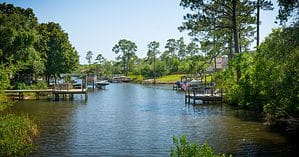The earth is diverse in many ways; language, culture, food, and even climate. The majority of the world’s nations have distinct temperatures for a variety of scientific reasons.
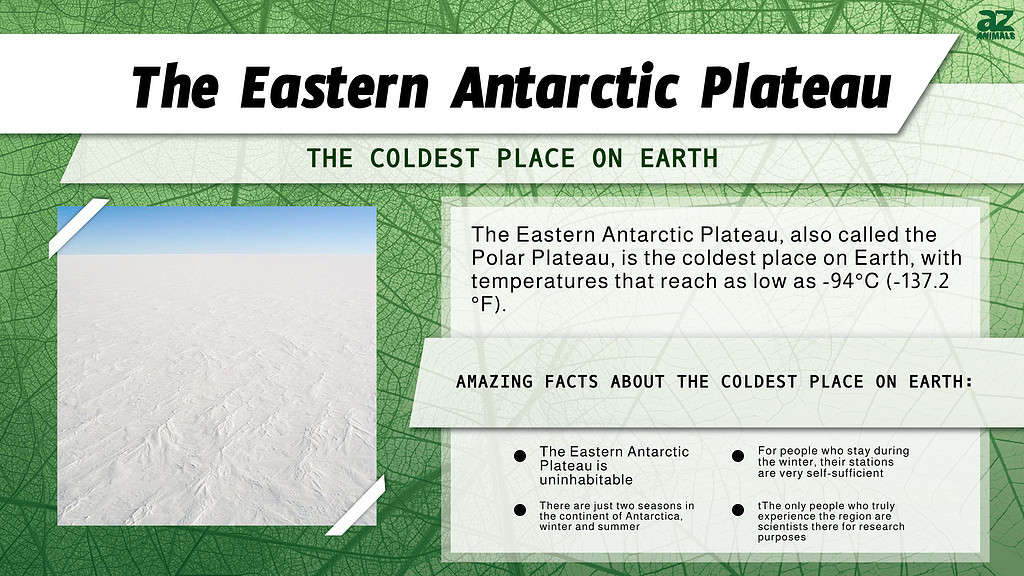
Primarily, the climate of a place depends on a variety of elements, including the quantity of sunshine it receives, its elevation above sea level, the form of the terrain, and how close it is to oceans. Another thing that determines how hot or cold a place might get is the changing seasons.
Despite mother nature giving many places in the world an opportunity to experience both the cold and the heat, there are some parts of the world that, no matter the season, are always cold. These places have some of the least number of people living there, and some are almost entirely uninhabited.
What do you think the coldest place in the world is? Do you think you can survive there?
Let’s find out.
What is the Coldest Place on Earth?
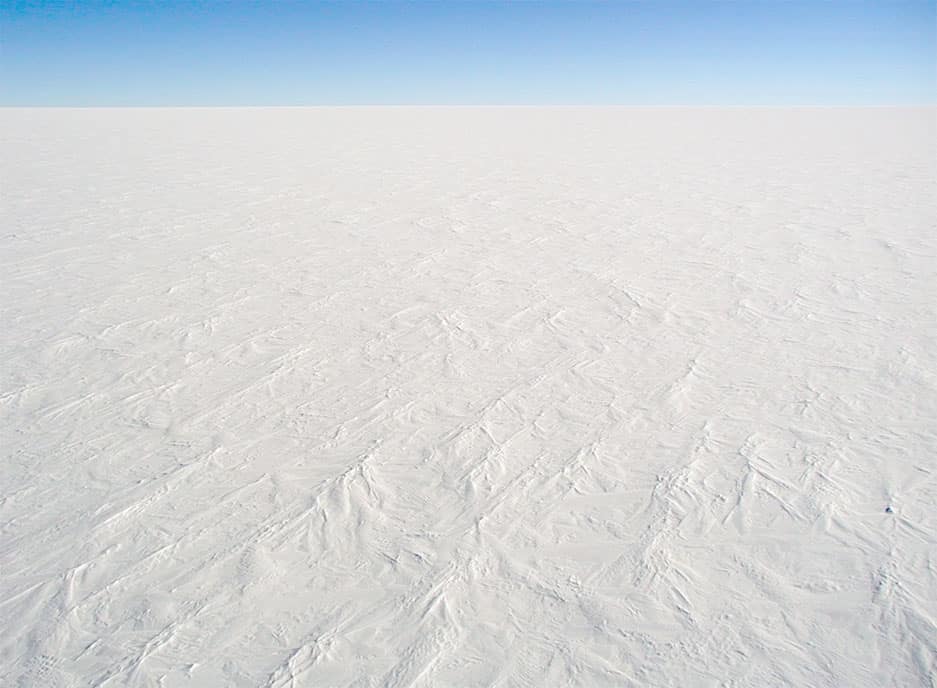
The East Antarctic Plateau is the coldest place in the world.
©Stephen Hudson / CC BY-SA 3.0 – License
The coldest place in the world is the Eastern Antarctic Plateau, Antarctica. The Antarctic Plateau, sometimes called the Polar Plateau, is a large part of Eastern Antarctica. East Antarctica is called Greater Antarctica because it covers most of the continent. This part of the continent lies on the Indian Ocean and is separated from the West by mountains.
East Antarctica is completely covered in ice, with the exception of a few small patches of the shoreline, and it is also where the South Pole is located.
The East Antarctic Plateau has the coldest climate of any location on Earth due to its high elevation and proximity to the South Pole. The area can reach temperatures as low as -94°C (-137.2 °F).
Are There People in the Eastern Antarctic Plateau?
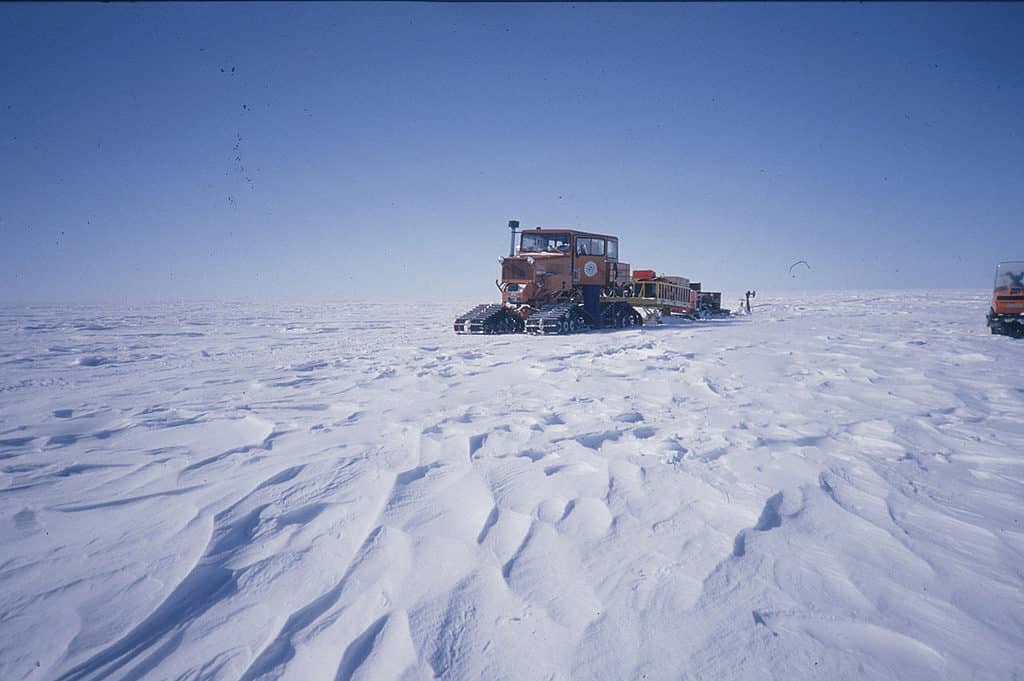
There are no native Antarcticans.
©Stephen Bannister / CC BY 2.5 – License
Antarctica is the only continent without an indigenous population. In other words, there are no native Antarcticans or people who can claim to be from there. Despite the fact that there are no native Antarcticans, permanent inhabitants, or citizens of Antarctica, many people live there yearly for various reasons, primarily for research and tourism.
As there are no permanent inhabitants in this region, science stations for researchers are the only form of housing. Currently, there are just a little over 60 scientific stations serving as national research bases across Antarctica, with the least number of stations being in the Eastern Antarctic Plateau. Although some of these stations can house over a thousand scientists, there are a few in colder regions like the Eastern Antarctic Plateau that do not house even up to 10 people. Scientists in this region are only there for a short period for research purposes. These scientists can spend anywhere between five and six months, and some of them even stay as long as 15 months.
For tourists visiting Antarctica, many of them stay on expedition ships or go camping in areas where the activity is permitted. In the Eastern Antarctic Plateau, however, camping is not permitted. So, the only people who truly experience the region are scientists there for research purposes. Transport to and from scientific stations is also only feasible during the summer because the winter brings widespread sea ice, strong winds, and low visibility, all of which make transit extremely dangerous.
Additionally, a lot of these stations are frequently far apart from one another, requiring scientists to travel great distances in hazardous conditions to meet up. Stations in areas like the Eastern Antarctic Plateau stay closed during the winter because it gets colder there than anywhere else, while some of the others stay open all year.
Can You Survive in the Eastern Antarctic Plateau?
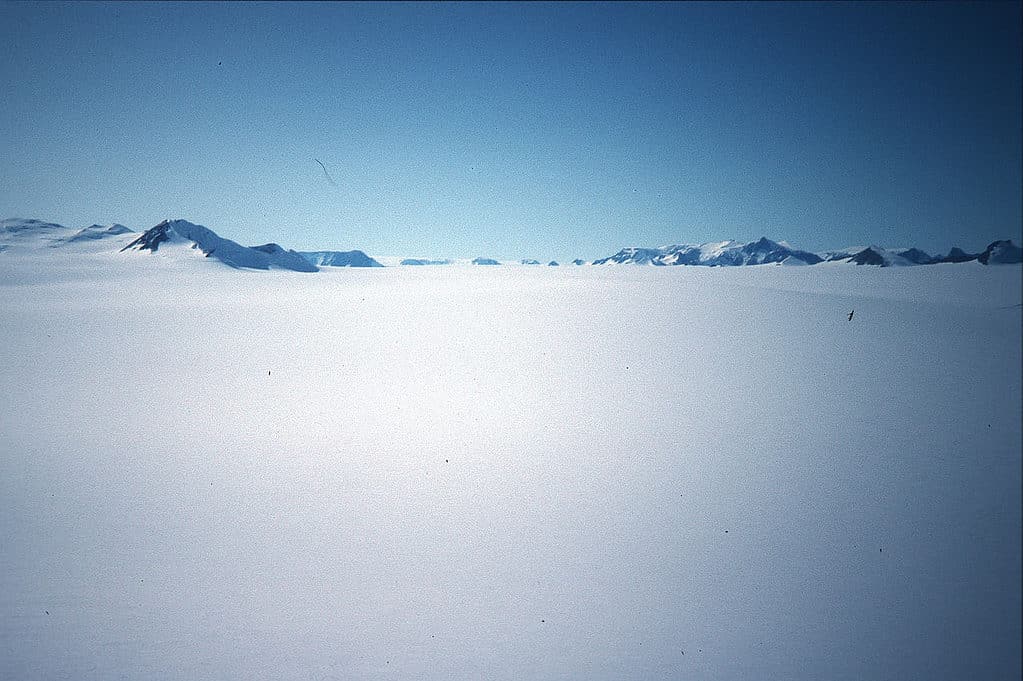
The Eastern Antarctic Plateau is uninhabitable.
©euphro / CC BY-SA 2.0 – License
Generally, because of the weather conditions of the Eastern Antarctic Plateau, it is mainly uninhabitable. The primary reason for this is the sub-zero temperatures. Due to the harsh winter weather and difficulty traveling to and from research stations, few people stay on the Eastern Antarctic Plateau. For the people who stay behind during the winter, their stations are usually very self-sufficient, meaning they do not have to leave the station for any reason during the winter. Depending on the station’s size, it might have dining halls, clinics, schools, and even greenhouses.
There are just two seasons in the continent of Antarctica, winter and summer. Winter in the Eastern Antarctic Plateau is worse than winter anywhere else in the world. When Antarctica faces the sun in the summer, there is constant light, and the sun doesn’t set until the following winter. This is called the “Midnight Sun” or the Antarctic Day. The opposite is true in the winter, which is known as the Antarctic Night, when it is completely dark out, even during the day.
It is not advisable to be out during the winter, but if need be, it is important to layer up in clothes and footwear to avoid hypothermia and possible frostbite. The stations in the Eastern Antarctic Plateau and most of Antarctica, in general, are built elevated from the ground to prevent the snow from burying it. These stations also have insulated walls, floors, ceilings, and windows to keep out the cold.
The photo featured at the top of this post is © euphro / CC BY-SA 2.0 – License / Original
Sources
- The Economic Times, Available here: https://economictimes.indiatimes.com/antarctica-is-earths-coldest-spot-with-93-2-c-temperature/articleshow/27182806.cms?from=mdr
- Science News, Available here: https://www.sci.news/othersciences/geophysics/coldest-place-on-earth-east-antarctica-06137.html
- Michael Irving, Available here: https://newatlas.com/coldest-spot-earth-antarctica-plateau/55221/
Thank you for reading! Have some feedback for us? Contact the AZ Animals editorial team.






